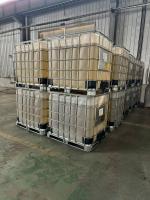Polyamine is a versatile polymer widely recognized for its utility across multiple industries. Its unique properties, such as high cationic charge density, water solubility, and adaptability, make it indispensable for processes involving coagulation, flocculation, and charge neutralization. This document delves into the primary applications of polyamine, emphasizing its widespread use across various sectors.
1. Water Treatment Applications
Polyamine plays a pivotal role in water and wastewater treatment processes. It functions as a cationic coagulant, efficiently neutralizing negatively charged particles and promoting the agglomeration of suspended solids.
Drinking Water Treatment
-
Polyamine is essential for purifying raw water sources.
-
It removes colloidal impurities, organic matter, and turbidity to produce safe drinking water.
-
When used alongside aluminum or ferric salts, polyamine enhances coagulation efficiency.
Wastewater Treatment
-
In industrial and municipal wastewater plants, polyamine helps in clarifying water.
-
It efficiently reduces Total Suspended Solids (TSS) and Total Organic Carbon (TOC).
-
Polyamine aids in removing color and chemical oxygen demand (COD) from effluents.
Desalination
-
In reverse osmosis (RO) processes, polyamine assists in pretreatment stages to ensure membrane longevity by reducing fouling caused by suspended solids.
2. Paper and Pulp Industry
Polyamine has a significant role in the papermaking process, where it enhances productivity and quality while reducing chemical costs.
Retention and Drainage Aid
-
Polyamine improves the retention of fine fibers and fillers on paper machines.
-
It aids in draining water more efficiently during the sheet formation process.
Charge Neutralization
-
In the wet end of paper machines, polyamine neutralizes anionic trash, enhancing the effectiveness of other retention aids.
Deinking Process
-
Polyamine helps in separating ink particles from recycled paper fibers.
-
It is a critical component for improving the brightness of recycled paper.
3. Oilfield Industry
The oilfield industry extensively uses polyamine for drilling, production, and enhanced oil recovery.
Drilling Fluids
-
Polyamine is incorporated into water-based drilling fluids to improve stability and reduce fluid loss.
Oil-Water Separation
-
In oil production, polyamine facilitates the separation of oil from water in emulsions, improving crude oil quality.
Pipeline Corrosion Inhibition
-
Polyamine is used to coat pipelines and storage tanks, preventing corrosion caused by acidic or saline environments.
4. Textile Industry
In the textile industry, polyamine plays a crucial role in dyeing, printing, and finishing processes.
Color Fixing Agent
-
Polyamine binds dye molecules to fabric fibers, enhancing color fastness and reducing dye wastage.
De-sizing Agent
-
It helps remove sizing materials from fabric, ensuring uniform dye application.
Wastewater Treatment in Textiles
-
Polyamine treats dye-laden effluents, effectively reducing color and chemical loads in discharged water.
5. Mining Industry
Polyamine enhances mineral processing by improving separation efficiency.
Flocculation in Tailings
-
Polyamine consolidates fine particles in mining tailings, aiding water recovery and reducing environmental impact.
Froth Flotation
-
It is used in flotation processes to selectively bind certain minerals, enhancing recovery rates.
6. Cosmetics and Personal Care
In personal care products, polyamine is valued for its conditioning properties.
Hair Care
-
Polyamine is found in shampoos and conditioners to improve hair manageability and softness.
Skin Care
-
It acts as a stabilizer and emulsifier in creams and lotions, ensuring product consistency.
7. Agriculture
Polyamine benefits agriculture through its role in soil conditioning and irrigation.
Soil Stabilization
-
It binds soil particles, preventing erosion and improving water retention.
Fertilizer Additive
-
Polyamine is used to coat fertilizers, reducing nutrient leaching and improving efficiency.
8. Industrial Applications
Beyond specific sectors, polyamine serves in diverse industrial applications.
Electroplating
-
Polyamine acts as a leveling agent in electroplating processes, ensuring uniform coatings.
Adhesives and Sealants
-
It enhances the strength and durability of adhesives and sealants.
Paints and Coatings
-
Polyamine is used as a dispersant, improving pigment dispersion in paints.
Conclusion
Polyamine’s versatility and effectiveness have cemented its position as a critical polymer across multiple industries. Whether for water treatment, oilfield applications, papermaking, or agriculture, its unique properties make it indispensable. As industries continue to evolve, the demand for polyamine is expected to grow, further highlighting its significance in modern industrial processes.
This document underscores how polyamine is at the core of numerous technologies and processes, demonstrating its unparalleled adaptability and effectiveness.




